Hey there! You all know that Shopify has become one of the most popular online stores in a very short time. It is the most used online store worldwide, with more than 1 million and a half active stores, thus surpassing Prestashop, and of course Magento. Here we will discuss translating Shopify in multiple languages.
Shopify is not so well known yet, it is far behind WooCommerce, but it is already used by large brands such as Mediamark, Tous, or Hawker. However, despite its success, Shopify still has significant shortcomings, and among them is the issue of translations.
Find out how to translate all the content of your Shopify store. The text strings of your store’s “theme”, and especially your product catalog. We help you understand and organize the entire translation process, choose the best translation plugin for Shopify, install, configure, and do the automatic translation to the language you want, review the most important translations- products, slugs, check-out page, emails to customers, etc. And most importantly, know how much it costs to translate a Shopify store, to decide between translating your store for free, on your own (yes, you can!), or ask for help from an agency specialized in website translation.
Can I Translate My Shopify Store?
Yes, Shopify comes prepared to create and manage multi-language stores (translated into several languages), and it also incorporates localization settings (currency, taxes, …etc), but “with limitations”. And is that to translate your Shopify you must have a compatible theme, pay to improve your Shopify plan, and download a translation plugin (free or paid). This is confirmed by the help page of the official Shopify website- “Shopify: sell in multiple languages” and “Shopify: cross-border sales”.
In order to translate your Shopify store into other languages you must:
- Have a Shopify theme compatible with the multi-language feature and the Shopify API. As of today, all free Shopify themes are supported.
- Contract the «Shopify» (79 USD) or «Advanced» (299 USD) plan, which are the only ones that allow you to have a multi-language store. The “Shopify” Plan allows 2 additional languages and the “Advanced” up to 20 additional Shopify multiple languages. The “Basic” plan does not include multi-language functions!
- Download and install a translation plugin to translate your “product catalog”. And it is that even if translating your Shopify store is automatic and does not take more than 5 minutes, to translate the texts of your pages and products you will need a plugin from the official list of plugins compatible with Shopify, according to your needs (and your budget!).
Next, we first explain how the texts are organized in a Shopify store, and then how to translate them, depending on whether they are texts from the Shopify store/theme or content created by the user- product names and descriptions, conditions of sale, etc.
What Needs To Be Translated in Shopify?
Every Shopify store incorporates 3 text layers, added -one after another- by different authors. Shopify, the theme designer, and finally you, as the editor of the texts of your store. Therefore, it would be necessary to translate first the texts of the Shopify platform (functionalities), then the texts of the Shopify theme (usability), and finally, all the texts that you have written the texts of your product catalog, pages, emails to clients, etc.
It is essential to know how to differentiate and classify each text well in the corresponding category since this will determine how to translate each one.
- Own texts of the Shopify store platform: Control panel (back office), texts related to Shopify functionalities, etc. All these texts Shopify has already translated, you just have to activate the corresponding Shopify in multiple languages.
- Texts of the “theme” or Shopify template you have chosen: Texts related to usability, menus, and buttons, shopping cart, checkout. The most popular Shopify themes already come with their own translations, you only have to activate them, although it is usually recommended to review/correct these translations.
- Contents «product catalog»: Text pages, products, emails to clients. These texts are the core of your store and this is where you should focus your translation efforts.
Translate “The Store” Shopify
To translate a Shopify store into other languages, or as Shopify says “add new languages”, you just have to access the Shopify control panel, go to “Settings”, click “Store languages”, go to ” Translated languages ” and click on“ Add languages ”.
Remember that you must have contracted the Shopify plan (79 USD) or the Advanced plan (299 USD), which allows translating up to 2 languages or 5 languages respectively. The simplest plan, the Basic (29 USD) does not include a multi-language store!
Shopify automatically translates the store into the selected language. In reality, these are few texts, most of them related to the functionalities of the store. They are what are called “text strings”, “button expressions”, “warnings”, and so on. We can edit these texts/translations later if we want to “improve” the translations that come by default.
When we talk about “Shopify store” we refer to the Shopify online store platform, the empty “continent” of Shopify, the common trunk to all Shopify stores that includes all eCommerce functionalities.
Translate The Shopify “Theme”
The theme of a Shopify store includes very important texts- header, footer, search, shopping cart, checkout. Although most themes already come with these translated texts (you just have to activate it), it is convenient to edit/correct these translations.
Shopify themes come in English, but most include Shopify multi-language options with the texts already translated into the most common languages. In these cases, just change the language of the theme. If your theme doesn’t have the language you want, you can create the translations yourself, as explained on the Shopify translations help page.
To change the language of a multilingual Shopify theme, just go to the Control Panel, “Online Store” and “Themes”. Select “Actions” “Edit languages ”and click” Change theme language “. Select from the drop-down and save your selection. If the language you want to use is not included in the list, you will need to create a new translation for your theme.
If your language is not available, go to “Change theme language”, choose “Other languages” and select language and region (the country where you are going to sell). You can enter all the new translations by hand from the “Language Editor”.
To edit or correct the translation of a text of the theme of your store, you must go to «Online store»> «Themes». Select “Actions”> “Edit languages”. Shopify will show you all the texts of the theme and its translation, in a 2-column table, with the original language on the left and its translation on the right. You can navigate through the different sections and translate what interests you- Header, Footer, Search, Home, Product, Shopping cart, Checkout or you can search the search engine for the word or phrase you want to translate.
Shopify in Multiple Languages – Translate Texts and Products
To translate the texts of your online store, your products, conditions, check-out, and emails to customers, you must install a translation plugin. There is no other.
Translation Lab, Langify, WeGlot, Polyglot, Bablic, Multilingo, LangShop. There are many translation plugins for Shopify, and they are all very different in terms of functionality and prices. If you want to avoid compatibility problems with your theme, be able to use an automatic translation, check through a contextual translation editor, and pay as little as possible, it is essential to choose the plugin that best fits your Shopify store correctly. Later on, we will analyze in-depth the main plugins, compare them and recommend which one to choose.
Before evaluating the different translation plugins for Shopify, it is important to talk about prices and costs, understand the role of machine translation, and study the different SEO parameters, since each plugin has different characteristics and priorities.
How Much Does It Cost to Translate a Store?
Translating a Shopify online store usually ends up costing around € 1,000 or € 2,000, plus the plugin license (about € 100 / year). The price of translating a Shopify online store depends on 4 factors- the size of the website, the number of languages, the translation plugin, and the quality of the translations. In any case, translating your online store is an investment that always pays off.
Can a Shopify store be translated for FREE? Yes, you can. There are free plugins that you can install yourself, and you can do the translations yourself, or paste & copy into Google phrase by phrase (these plugins do not offer automatic translation). Obviously translating your store like this will take a long time and the translations will not sound quite right, which will undoubtedly put a lot of potential customers back. But hey, it’s free!
What does the price of the translation of a Shopify store depend on?
- TRANSLATION PLUGIN: although there are free plugins, the best ones, which incorporate automatic translation, are paid. Calculate a price of € 10 – € 30 per month.
- COMPUTER: installing and configuring the plugin is not complicated, but there are a thousand things that can go wrong incompatibilities, mismatches. If you have the opportunity to have a computer scientist do it for you for little money, much better. Approximate cost from € 0 to € 300.
- AUTOMATIC TRANSLATION: The Automatic Translation option is included in many plugins by default, its cost is included in the price of the plugin, about € 200 – € 400 / year, which you must pay every year (€ 1,000 – € 2,000 after 5 years ). Be careful because you must add the cost of a good revision if you want quality translations (another € 1,000 minimum).
- HUMAN TRANSLATION: The human translation option depends strictly on the number of words and the language but is usually between € 1,000 and € 3,000. Human translation includes proofreading and the final quality, of course, is much better than automatic.
- REVIEW: If you have done Machine Translation it would be advisable to have a good native translator review the machine translations. Maybe not all of them, but at least those of the Home, sales conditions, best-selling products, check-out page, emails to customers, etc. The revision price is calculated per hour and is usually € 40 / h. In 10 or 20 hours a good native translator can review a lot of text, it is well worth it! Average cost 400 – 800 EUR.
- LANGUAGE: Translating an online store into English or French will always be cheaper than translating it into Chinese or Russian. The price of a Shopify language translation into English is € 0.08 while translating into Russian or Chinese usually costs between 0.12 and 0.15. If it is per word, the revision price would behalf, and if it is per hour, about € 30-40 for English versus € 60-80 for Russian or Chinese.
How much does it usually cost to translate a Shopify store? The normal thing is to calculate that translating your Shopify store into another language will cost about 1,000 or 1,500 euros, including automatic translation and human review of the most relevant texts. To this must be added the cost of the plugin license, about € 100, which you will have to pay every year.
Translating into more languages will not cost you much more, since the cost of the IT will be the same, and although the price of the plugin may go up, it would be very little. What you should calculate would be another extra package of revision hours for each new language.
Is It Good to Use Machine Translation?
Today many online stores are translating with automatic translation, taking advantage of the fact that most plugins justify their price by adding automatic translation functionality (“machine translation” or “AI”). But is it good to use machine translation to translate a Shopify eCommerce? What level of quality do they offer? Can it be supplemented with human translators?
Machine translation is (almost) free and that’s a brutal bonus. Professional translators charge approx. 0.10 euro. for every word they translate. Translating a product with a description of 10 lines (100 words) would cost 10 euros; If your store has 100 products the price will be 1,000 euros, but if it had 1,000 products the cost would rise to 10,000 euros!
Obviously, the quality is not the same. Machine translation into English has improved a lot and is no longer as bad as it used to be, but it still sounds artificial and potential buyers are less and less tolerant of poor quality translations. There are too many alternatives, and your competition is just one click away. What to do then?
Translating “only” with machine translation is not ideal, but it can be a good starting point. Especially in very large stores, where translating everything in a traditional way would be unfeasible. Machine translation is perfect for doing the hard work, large volumes of text for which it is worth 85% quality.
Ideally, you should complement your machine translation with a subsequent review by a professional 100% native translator, someone to adjust translations, correct errors, add a human touch, local expressions, sales-oriented intent, etc. It is not necessary to review all the contents, but the most important pages- the home page, the conditions of sale, the best-selling products, the checkout page, emails to customers. This is what companies that really bet usually do for your online store, and you really can tell the difference.
Shopify Translation and SEO
SEO is one of the keys to the success of any eCommerce, even more so when translating a store to attack other markets. It is a fundamental pillar of any sales strategy, an area with immense potential, where an investment of € 500 or € 1000 (for example in WPO) can double your sales!
Translating a Shopify store with SEO criteria means first optimizing the SEO of your store, and then choosing a plugin that maintains that SEO as best as possible when translating your store into English, French, German, or any other language. Shopify is a good platform at the SEO level. It has many things that are / can be optimized at the SEO level, and others that are not. Read the guide ” How to improve the SEO of your Shopify store” or this other “All about Shopify SEO”.
Limitations of Shopify at the SEO level, which will also inherit translations :
- URLs: Shopify overloads page URLs with words like “collection” or “product” and doesn’t allow customization. This is aggravated by translations. Shopify does not allow translating the slugs, that is, the name of the product that appears in the URL.
- Sitemaps: Shopify only generates a sitemap, and it will be in the original language. It does not allow its own sitemaps for each language.
In almost everything, there are a number of important SEO aspects that will depend on the translation plugin you choose. Normally the free or cheaper plugins go a long way from SEO, and only the paid or the most expensive ones meet all the requirements.
SEO criteria to be required of the plugin with which you are going to translate your Shopify stores :
- Unique URLs: Choose a translation plugin that can create static pages with a fixed URL. Avoid plugins that generate translations on dynamic pages created “on-the-fly” using JavaScript programming, since Google will not index these pages.
- Meta tags “title” and “description” (metatags): They are SEO tags in which you define the title and description of a page, and that Google will show in its search results. Most plugins translate them automatically.
- Hreflang tags: They are SEO language tags, which indicate to Google the alternative versions of that page translated into other languages. Most plugins generate them automatically.
- Local domains (“country-specific domains”): For small businesses that want to move fast, the option of having a single multi-language domain is most practical. But for large companies that want to invest more, the ideal SEO level would be to have the stores translated into local domains, one per language/country- www.mitienda.fr, www.mitienda.de, www.mitienda.it, etc. This is more expensive and requires more work, but has a huge impact on SEO. Shopify has recently adopted this ” international domains ” strategy, but very few plugins allow it so far (only Langigy and LangShop today).
Best Translation Plugins for Shopify
Although you can automatically translate the Shopify platform and theme from the Shopify control panel, it won’t do you any good if you don’t translate your product catalog. As we have explained previously, for this you will need a translation plugin. What are these translation plugins? Where can you find them?
Of the 15 official Shopify translation plugins, the 3 most downloaded and highest rated are “Translation Lab”, “Langify”, and “WeGlot”. There are many more, of course, some simpler and cheaper, like Polyglot, Bablic, or Multilingo, and others more expensive and exclusive, like LangShop. Shopify publishes the official list of all Shopify translation plugins on its AppStore, but it does not evaluate them, it does not compare them, it does not help us to choose. What are the best plugins to translate a Shopify store? Which one best fits your online store? How to choose?
Comparison between Different Translation Plugins
To choose the best Shopify translation plugin we have installed and tested (almost) all of them, and we have compared them by analyzing a total of 11 criteria, on which we will base this analysis. This is a personal but totally objective and honest opinion, updated as of November 2020. If there is an error, do not hesitate to let us know.
Criteria for the Shopify translation plugin comparison:
- Price: Annual subscription fee.
- Translation limitations: Number of multiple languages, number of words translated, etc.
- Evaluation test or “free trial”, essential to verify that the plugin is compatible with your theme, widgets, and other installed plugins.
- Compatibility with most popular Shopify themes.
- Ability to translate the maximum number of elements: Pages, products, theme text strings, slugs, images, etc.
- Automatic translation. Does it allow automatic translation with Google or DeepL?
- Contextual editor. In addition to the 2-column table editor, can you edit the translations visually, on the web?
- Export/import of translations: Can you export the texts to be translated to send them to a Shopify translator or agency? In what format do you export: CSV, XML, xliff?
- SEO-friendly. Does it allow translating the title and description metatags? Does it include hreflang tags? Does it mess up the page code? Does it allow to use of dedicated domains?
- I own the translations. If you uninstall or stop paying for the plugin, will you still have the translations, or will they disappear?
- Documentation and technical support. Are there explanatory videos and guides? Do you have a human technical support team? Do they respond quickly and help solve problems?
The Best Free Shopify Translation Plugin
“Translation Lab” is probably the best free plugin to translate a Shopify store, as long as you can translate the texts yourself because it does not include automatic translation, nor export of content for an external translator to translate. The translation will therefore be quite laborious and will take a long time.
Advantages of Translation Lab
If you don’t want to spend a penny, Translation Lab is your translation plugin for Shopify. Translation Lab uses Shopify’s new native multilingual system, which improves loading speed and performance, and translates everything- products, collections, theme, checkout, checkout page, emails to customers, etc. It is also SEO friendly, since it generates unique pages, allows translating meta tags, adds hreflang tag, etc. And generally, the customer support is pretty good.
Disadvantages of Translation Lab
The only problem with this free plugin is that it does not include automatic translation, nor does it include the export/import of texts. There is an option to pay but it is an individual developer, without a powerful company behind, there are better alternatives for payment plugins.
You May Also Read: 10 Best Converting Shopify Themes For Online Stores 2021
WeGlot: The Most Immediate and Easy Plugin
WeGlot is a good professional plugin to translate Shopify- modern, friendly, compatible, SEO-friendly, offers automatic translation and contextual translator, with very good technical support for a price of 16 EUR / month. The problem is that it does not allow you to export translations, or use local domains.
Main advantages of WeGlot:
- WeGlot offers automatic translation, although limited in languages / number of words.
- WeGlot includes an excellent contextual editor to translate web design.
- WeGlot translates almost everything: All the text strings included in the page code.
- WeGlot is the most modern, intuitive, and easy-to-use plugin.
- WeGlot is quite SEO friendly: It translates the meta tags and creates dedicated URLs for each translated page.
- Excellent support: Fast attention and effective solutions.
WeGlot offers 5 different pricing plans:
- “Free” plan: free, but limited to 1 language and 2,000 translated words (not feasible)
- “Starter” plan: € 8 / month (€ 99 / year) for 1 language and up to 10,000 words (ridiculous)
- “Business” plan: € 16 / month (€ 190 / year) for 3 multiple languages and 50,000 words (the most common).
- “Pro” Plan: € 41 / month (€ 490 / year) for 5 languages and 200,000 words.
- “Advanced” plan: € 165 / month (€ 1,990 / year) for 10 languages and 1,000,000 words.
Disadvantages of WeGlot:
- Hard to know how much it will cost. It is difficult to anticipate how many words your website has and therefore what plan you should hire. Think that you should add texts from static pages, products, checkouts, emails to customers, meta tags everything with 300 products you plant yourself in 30,000 words without blinking. That is a minimum Business plan (€ 190 each year).
- Export / Import. Translations can only be done online, on the Weglot platform. WeGlot does not allow the texts to be translated to be exported to send them to a translator or an agency, which closes the door to many advantages.
- It does not translate the slugs, that is, the product names in the URLs, something very bad for SEO.
- It does not allow local domains. WeGlot does not allow you to use different domains for each of your translated stores- it always places the translations in folders within the main domain, it does not allow you to use www.mitienda.fr. The French translation of a Shopify store will always be at www.tienda.com / a / l / fr!
- It takes time to consolidate content (SEO). Weglot translates “on-demand”, which is when a page is requested, not before. This can delay or affect the indexing of your pages.
- If you stop paying, you run out of translations. WeGlot stores translations in its cloud and allows downloading them, for example, to migrate them to another system. If you stop paying for your Weglot subscription, you will lose all your translations!
WeGlot is a good plugin at a technical and user level- modern, compatible, easy to use, fast. It is the ideal option for small stores that are in a hurry and/or are looking for automatic translation (leaving the door open to review translations from the contextual editor, using a native translator). It is a consolidated project and if your store is not very big, the prices are reasonable.
Langify: The Most Professional Plugin
“Langify” is the most popular and highest-rated Shopify payment plugin. It is a traditional plugin- for a single price of € 17.50 / month enable translations of your Shopify store into all the languages you want. It allows you to export your texts to send them to be translated outside, and the possibility of using different domains for SEO. But it doesn’t offer automatic translation.
Langify main advantages:
-
- Langify allows unlimited translations to all Shopify in multiple languages you want, with no limit on words or languages.
- Langify allows you to export the texts to be translated to send them to a translator or agency.
- Langify allows you to translate all elements, even apps or images. It even allows you to add “custom” translation rules for specific words or phrases.
- Langify is 100% SEO-friendly: It allows you to translate meta tags, it generates unique URLs. It even allows you to host your translated store on a local domain (for example www.mitienda.fr)
- Excellent technical support, super fast and attentive, they respond and solve any problem!
Langify problems or shortcomings:
-
- Langify does not offer machine translation. You will need to translate manually through the translation editor, or export and send it to a translation agency for translation (some agencies offer PEMT- machine translation + proofreading).
- Langify does not include a contextual editor, only the basic 2-column table editor: On the left, it shows the original language, and on the right the translations. This will make it more difficult for the translators to check the translations.
Langify is the ideal plugin for clients who want to do things right, old-school clients, who are willing to dedicate time and effort in order to achieve the highest quality in terms of translations, SEO, and conversion. Very low costs- flat rate of € 17.50 / month, translate Shopify in multiple languages into 1 or 15 types. Control of the process- you can export and send the texts to be translated to your favorite translator or agency (and if you want Automatic Translation, ask your agency for it). Property of the translations, which will always be yours even if they change plugin. And maximum SEO benefits, being able to have your stores translated into local domains in each country.
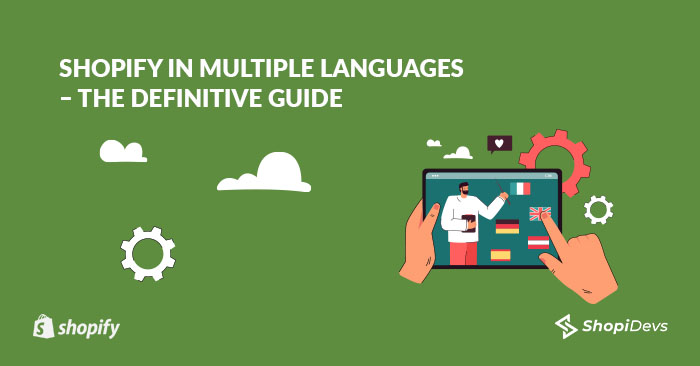

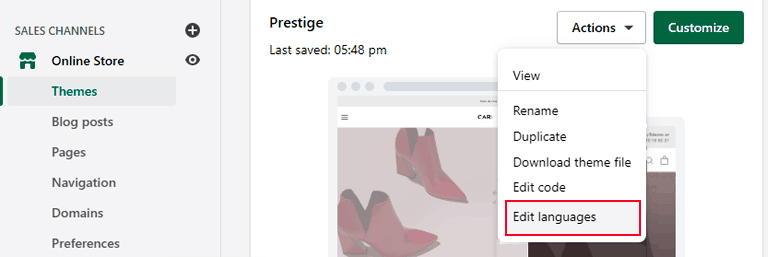
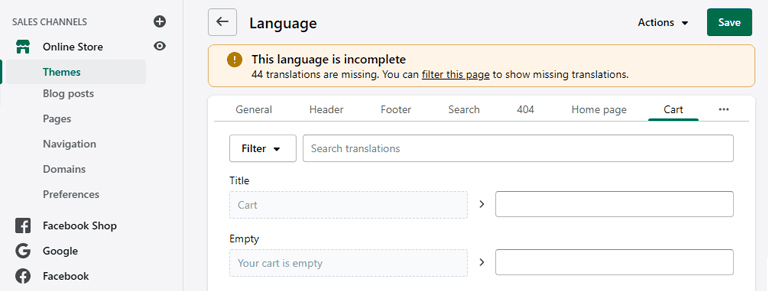
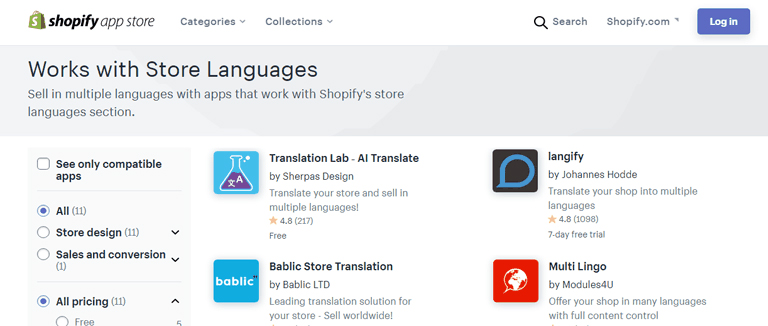
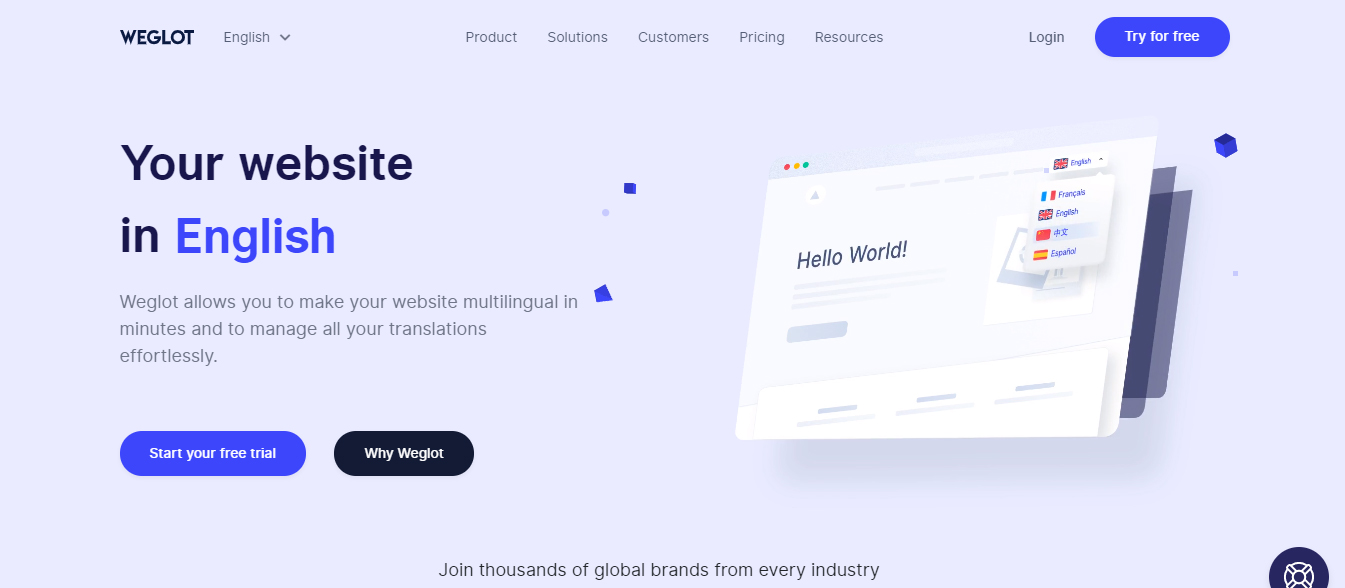

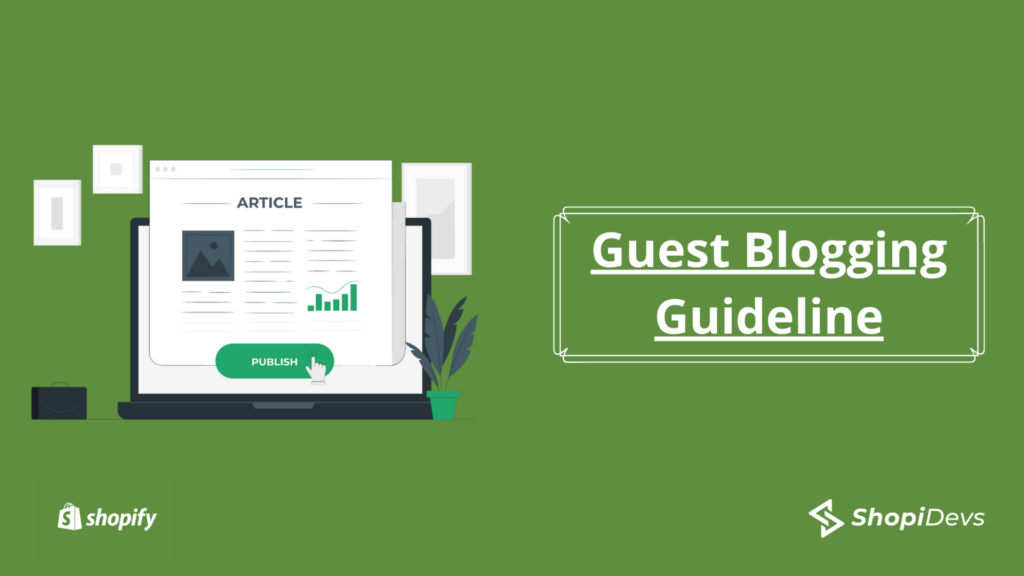
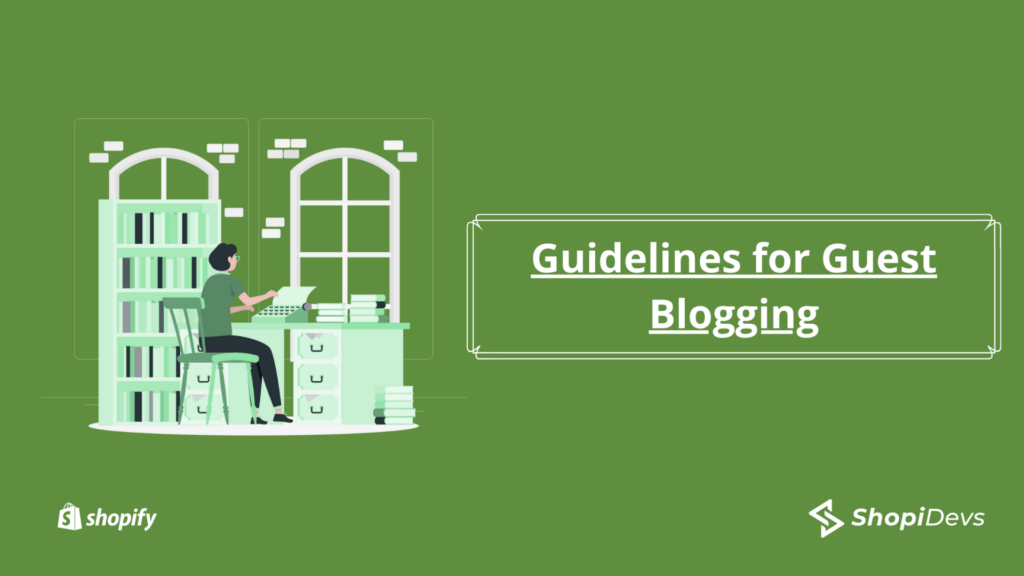

You completely missed one of the most serious problems with Shopify for international shops. There is no way to register customer language in customer accounts and for that reason you can only email customers in your default language. This is such an outdated way of working that I cant believe that Shopify still havent resolved this 2024. If you run multiple languages honestly at this point of time, I can not recommend Shopify.